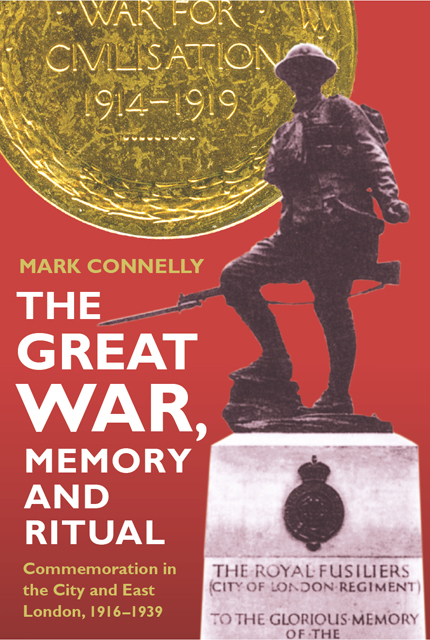8 - The Years of Flux, 1930-1935
Published online by Cambridge University Press: 22 March 2023
Summary
Armistice Day entered a period of flux between the years 1930 and 1935. A number of themes, present but not stressed in the Armistice Day observances of the twenties, became increasingly important. Thus the wider domestic problems of slump and unemployment found a greater role in East London ceremonies. Equally, out of the sudden realisation that international relations were being threatened by the totalitarian states of Europe and Japan came the general desire to support League of Nations disarmament conferences. At the same time the traditional values survived, and it was not impossible to hear completely contradictory messages during the same service. Armistice Day reached a crossroads as a new generation came to the fore and 1914 seemed to slip into distant history.
The years between 1930 and 1935 turned Armistice Day into something of a cocktail in East London as pacifism and elements of protest blended with the traditional elements of the day. But it is difficult to find evidence of a concentrated assault on Armistice observation; respect for the dead was always too strong for that to happen. In 1931 Communists tried to hold a meeting at the conclusion of the ceremony in Central Park. Far from being able to capitalise on renewed economic depression they were jeered and jostled and as the crowd sang Rule Britannia the police shepherded them away. Any attempt, real or imagined, to interfere with the sacred day was met with an innate conservatism. Much the same traits can be seen a year later at Stratford where it was rumoured that the National Unemployed Workers’ Movement was planning a disturbance. The Express reported that
As soon as the maroons sounded the silence the contingent … stood bare headed and silent but half a dozen men in the road shouted ‘1914, on the roll; 1932 on the dole', till they were spoken to by a police inspector. Then they too, ceased.
This report shows that despite the rumours the NUWM largely upheld the silence and the protest came from few men; even they had no real stomach for the desecration of the dead. In other districts Armistice Day was used as a platform for protest. The Poplar and Stepney branches of the British Legion used it to highlight the level of ex-service unemployment.
- Type
- Chapter
- Information
- The Great War, Memory and RitualCommemoration in the City and East London, 1916-1939, pp. 177 - 196Publisher: Boydell & BrewerPrint publication year: 2001

